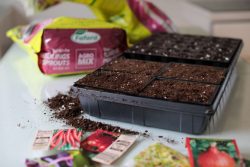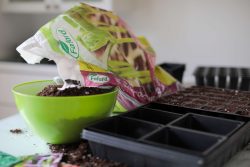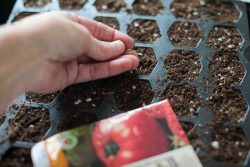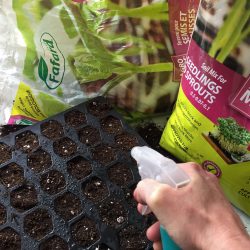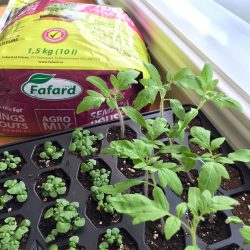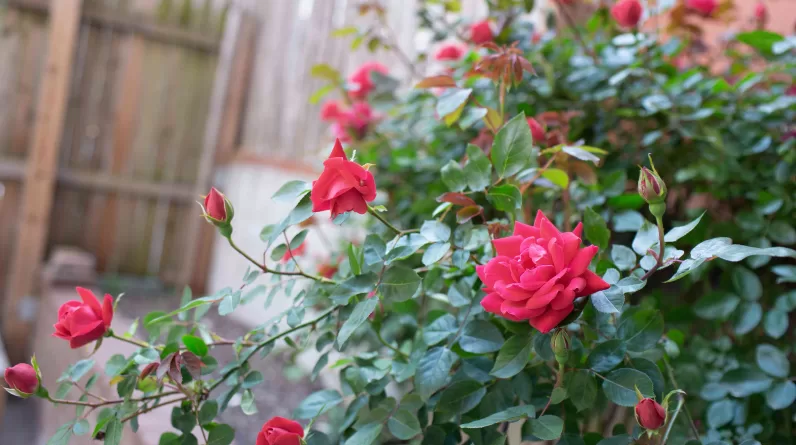No need to wait for spring to arrive to think about your vegetable garden. Despite the gray weather, you can already start preparing your vegetable seedlings in the comfort of your home. The questions you are probably asking yourself are: Where to start? When to start your seedlings? What equipment to use? How to get healthy shoots? Carefree. We will answer all your questions about growing seedlings indoors.
When to start sowing?
The ideal time to plant your seedlings indoors is usually in March. Furthermore, the exact date varies from one vegetable plant to another. Refer to the back of the seed packets for more details or consult
Remember that it is always better to start your seedlings too late than too early. It is better to plant young vegetable plants that are vigorous and ready to grow than old, stunted plants that are in decline.
How to Grow Healthy Seedlings: 9 Steps to Follow
1. Choose the right potting soil :
Opt for a lightweight potting soil specially designed for seedlings and cuttings. for seedlings and sprouts is approved for organic cultivation, making it ideal for growing young vegetable sprouts. This potting soil, based on sphagnum peat moss, is enriched with coconut fiber which facilitates wetting, thus promoting rapid and vigorous germination of your seedlings. In addition, the natural fertilizer it contains will provide sufficient nutrients to the seedlings to promote their growth during transplanting.
2. Moisten the potting soil :
Use a large plastic container to moisten the amount of potting soil needed to fill your small containers. Moisten the potting soil with a watering can and mix it until it is evenly moist.
3. Fill your containers :

Arrange the potting soil in small containers up to about 1.5 cm (½ in) from the edge and level it slightly with your fingers. When choosing containers, opt for a seedling tray sold in a garden center or choose recycled containers that you already have at home (yogurt pot, applesauce, etc.). You will only have to clean them well and drill a small drainage hole under each pot with a nail to ensure the good growth of your seedlings.
4. Place your seeds :

Place a seed on the surface of the potting soil, in the center of each container, and gently cover it with potting soil (3 times its thickness). Avoid pushing them in too much. A little pressure is enough to hold them in place. The finer the vegetable seeds, the less they need to be covered.
5. Cover with a transparent dome :
Place the pierced containers in a large waterproof tray that can collect excess water if necessary and cover it with a transparent dome. The ideal temperature during seed germination is between 21°C and 24°C for most vegetables (25°C and 30°C for tomatoes, peppers and eggplants).
6. Water :

Spray your seedlings once a day to keep the soil moist during germination. Ideally, use a spray that allows gentle watering and avoids disturbing the seeds. It is very important that the potting soil remains moist, but not soggy. If there are droplets on the dome, remove it momentarily to allow excess moisture to evaporate and thus prevent damping off (your young seedlings will wilt and lie on the ground).
7. Remove the dome, lower the temperature and place in the light:

When the cotyledons (the first 2 leaves) appear; which can take from 3 days to 3 weeks depending on the variety of vegetables, remove the dome and lower the temperature a few degrees (22°C during the day and 18°C at night). Too much heat, combined with insufficient light, will inevitably produce weak and stunted plants. Seedlings require 12 to 14 hours of light per day to gain strength and vigor. As natural light in March is insufficient, you will need to use additional lighting.
8. Transplant :
Transplanting involves transplanting the seedlings into a larger pot to give them the space they need to grow. This operation promotes the development of secondary roots which will ultimately allow the plant to anchor itself in the soil. A seedling can be transplanted when it has two true leaves in addition to the two cotyledons. If we wait any longer, the roots will be very intertwined. It will then be more difficult to transplant without damaging them and the growth of the seedlings will also be affected. Before transplanting, the seedlings must be watered. We gently release them with a stick. Holding it by a leaf and not by the stem, separate each seedling from the whole. Transplant into a box or small containers, covering the seedling up to the first leaves and water gently.
9. Plant :
In a few weeks, your seedlings will be ready to plant outdoors. We recommend an acclimation period lasting 7 to 10 days during which they will be gradually exposed to outdoor conditions. If the temperature suddenly cools, move them indoors for the night. When the weather warms up and there is no longer any risk of frost, it is time to plant.
There are only advantages to sowing seeds indoors!
Sowing your own seeds is easy and a lot of fun. This is a great activity to do with the children. The whole family will be proud to see the vegetables that you sow yourself grow. You’ll see how economical it is when you reap the fruits of your labor at the end of the summer season.

